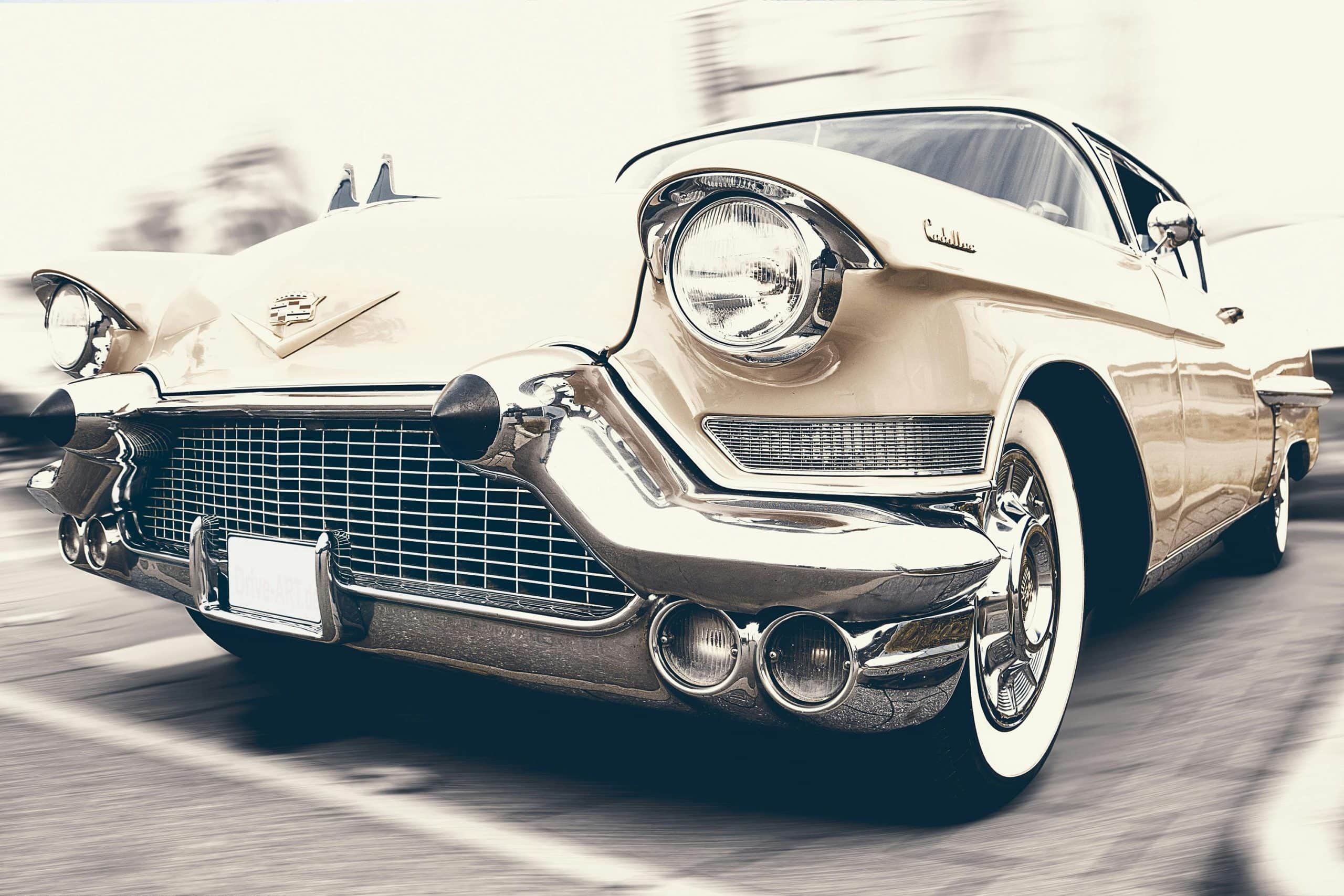Cadillac Runabout and Tonneau 12 Models all Designated by Letters
The Cadillac Runabout was the first Cadillac automobile ever built. The 1903 Model was built in the last quarter of 1902. These were 2-seater “horseless carriages” powered by a reliable and sturdy 10-horsepower single-cylinder engine. We have come a long way. The 1904 Model B of the Cadillac Runabout was a refinement of the 1903 Model A, and while still a mid-engined, one-cylinder automobile, it now had an extended front and transverse front suspension. There was a two-passenger Runabout or a four-passenger Tonneau. What would happen if the 1903 Cadillac Runabout and a modern car raced?
Cadillac Runabout Models

Model A
The Cadillac Runabout was completed in time for the New York Auto Show in early 1903. There were three cars sold at the show, and by mid-week, orders were taken for 2,286 more units. Each order for the Cadillac Runabout required a deposit of $10. The cars had some similarities to the Ford Model A. In the original Cadillac Runabout, the entire body was bolted to the chassis and could be lifted without removing or disconnecting any plumbing or wiring.
Model B
Introduced in January 1904, the Cadillac Runabout Model B was similar to their Model A, sharing its engine but using a pressed-steel frame and axles. The Runabout Model B was on a longer wheelbase. longer by 76 inches. The front axle was described as girder-style. It supported the car through a single transverse half-elliptic spring. The sloping dash was replaced by a detachable box-like front to the body and a vertical radiator. All body styles lost as much as 70 pounds in weight. Prices went up $50.
Model C and D
The Cadillac Runabout Model C was a short-wheelbase car intended to replace the old Models A and B for the summer of 1905. It shared much of the Model B chassis components, but used the hood and radiator of the later Model F. It rode on a 72-inch wheelbase. The Model C was available as either a runabout, priced at $750. The Model D was the same, but had a 4-cylinder engine.
Model E
The Model E Cadillac Runabout was released in January 1905. It was a featherweight 1,100-pound Cadillac Runabout model that seated two and cost $750 in 1905. It used a 74-inch wheelbase. The arched front axle was tubular. The axle was given a truss, and added mid-year was a rocker shaft between it and the spring. Single cylinder 98.2 cubic inch engine with an advertised output of 9 horsepower. The drive was taken to the back axle by a chain.
Model F
The Model F Cadillac Runabout was the primary new Cadillac model of 1905. It had a sharper hood and radiator, prompting the update of the Model B (which became the Model C) and even spawning an aftermarket of updates to existing Model A and Model B cars. Models E and F shared the same chassis, though Model F was two inches longer. The Model F was priced at $950. The Model F shared the same 76-inch wheelbase as had been used on the Model B.
Model G, H, and L
These were 4-cylinder Cadillac Runabouts that were offered in 1906. They had the same body as the earlier models and just had a more powerful engine.
Model K and M
Cadillac’s single-cylinder lineup was consolidated into two models for 1906, the short wheelbase Model K Cadillac Runabout and long wheelbase Model M. The Model K cost $750, and the Model K cost $950. 3,650 units were sold in 1907. The K and M were essentially similar to the Models E and F from 1905, but with updated bodies.
Model S and T
The Model S and Model T Cadillac Runabouts of 1908 were essentially versions of the K/M from previous years, with the wheelbase extended to 82 inches. These models would be the last single-cylinder Cadillacs. The main difference between the S and T was that the latter lacked running boards.
Conclusion
Cadillac Runabouts were among the first cars ever produced in the United States. It is interesting to think about whether the people who produced and showed this car thought they would be kicking off a transportation revolution. It is a matter of fact that there were more cars with the internal combustion engine to follow.






